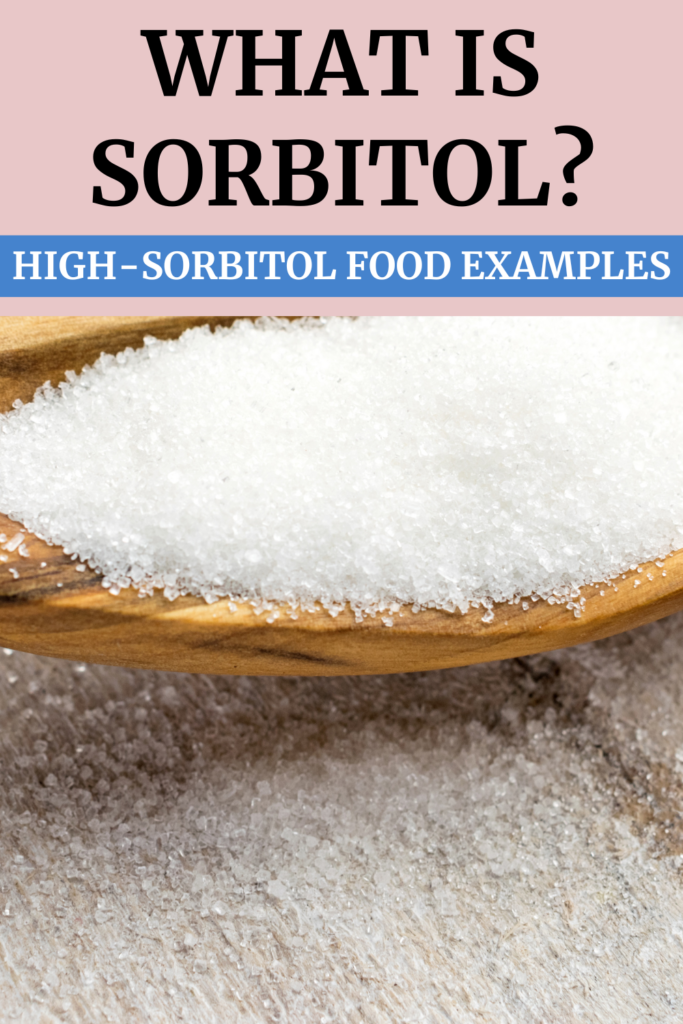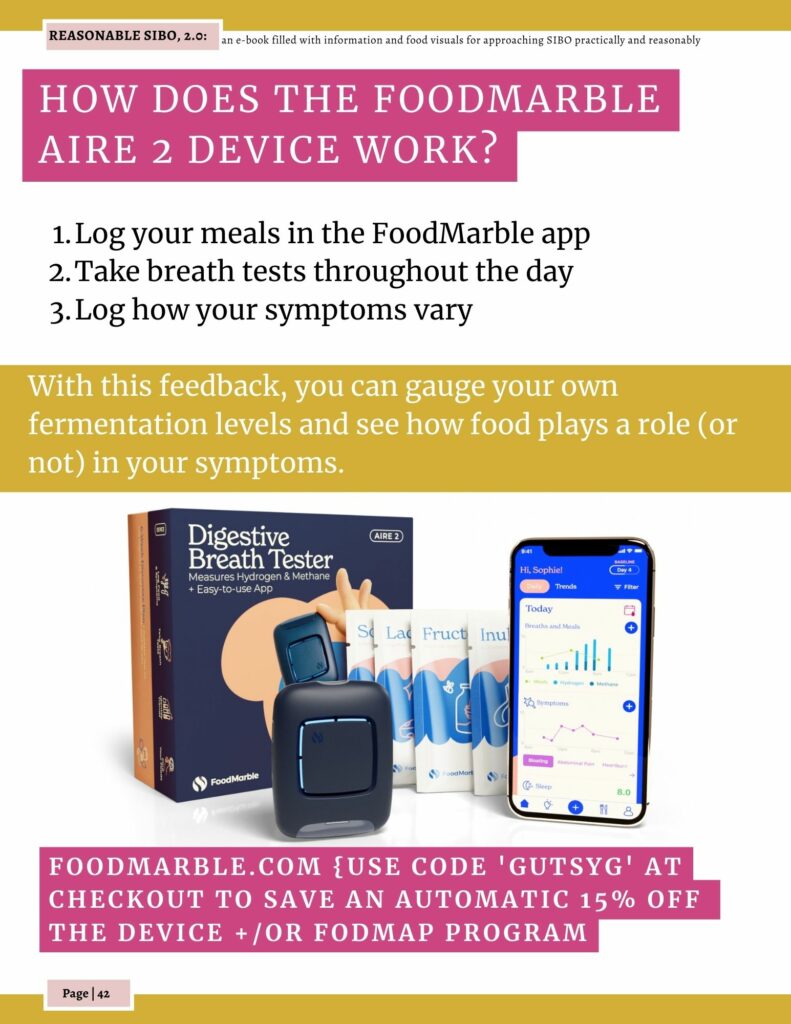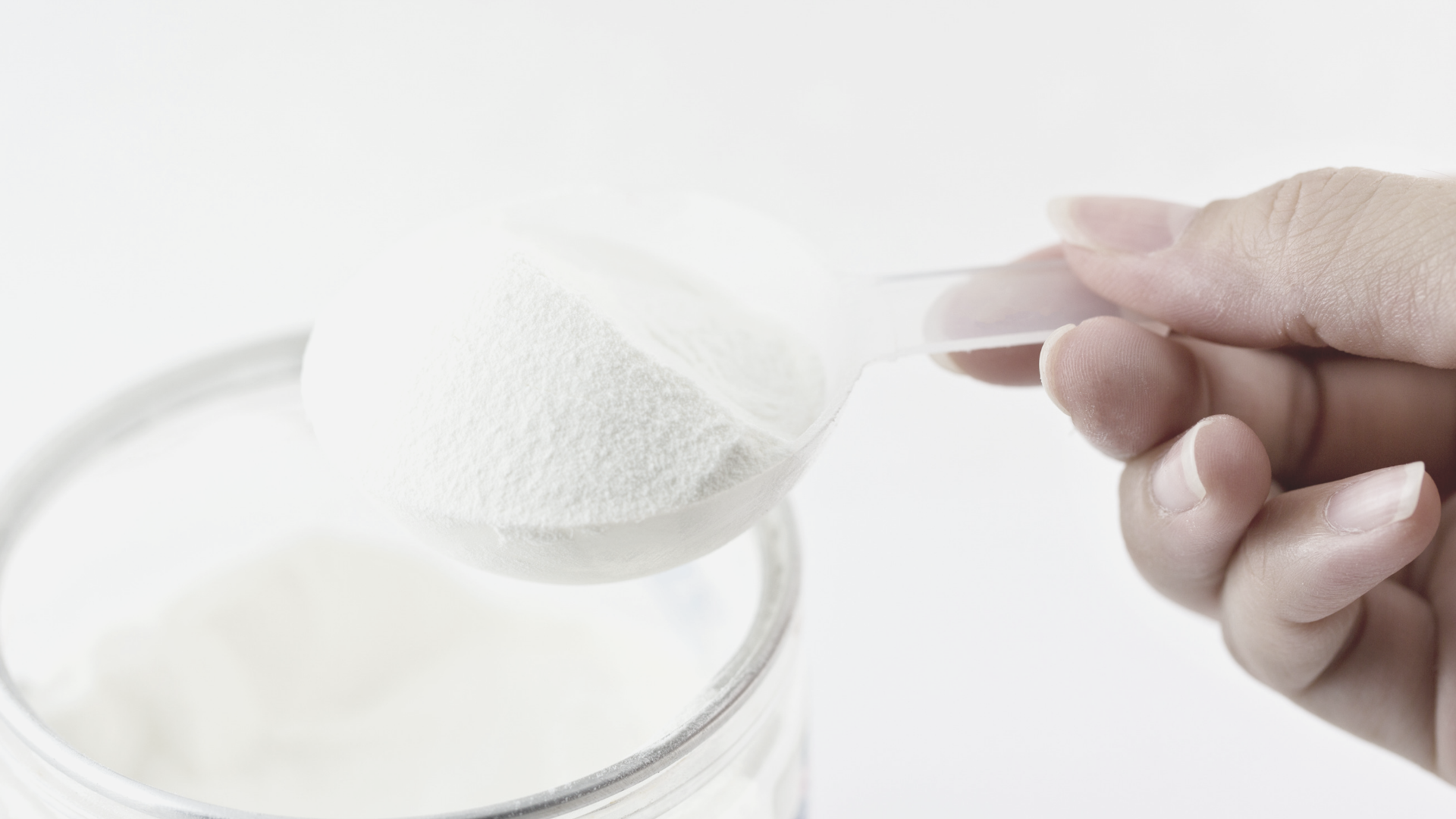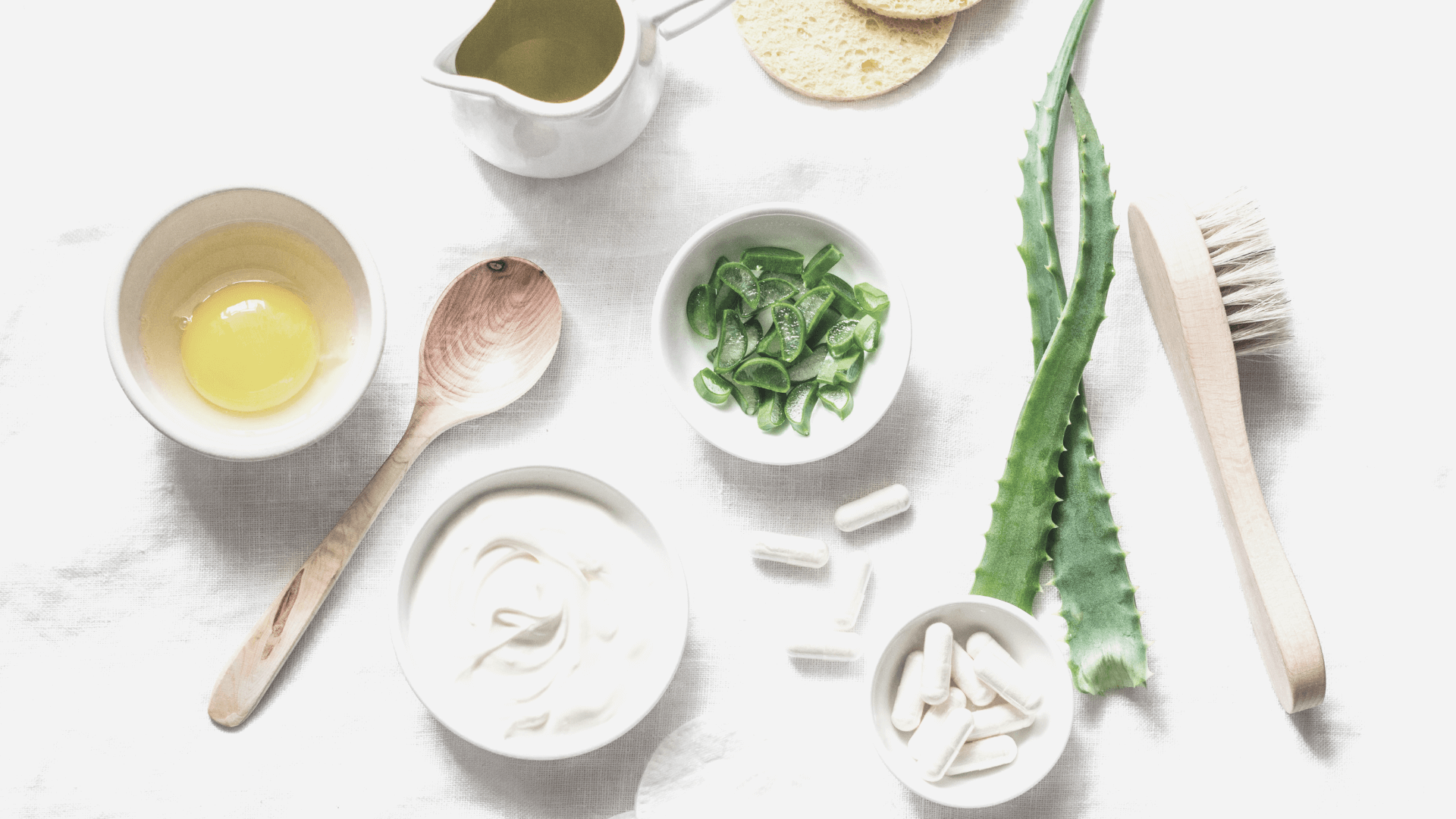What is sorbitol? And is it affecting you?
These are the questions we are seeking to answer.
What is Sorbitol
Click HERE to save this post for later.

Also sometimes called, D glucitol, sorbitol is a sugar.
A polyol, sorbitol is commonly used as an artificial sweetener because it has fewer calories than regular sugar.
It is often added to diabetic food products, chewing gum and low calorie soft drinks.
Sorbitol Examples
Sorbitol naturally occurs in many fruits and vegetables.
It’s also found in many processed foods.
Here are 13 examples of foods with a high concentration of sorbitol:
- blackberries
- apples
- apricots
- cherries
- avocados
- peaches
- plums
- lychee
- sugar-free gum
- soda
- nutrition bars
- sweet corn
- nectarine
In addition to these common foods, remember you might also see glucitol on the ingredient list in processed foods.

Is Sorbitol Safe?
Sorbitol has been used for many ages as sweeteners for food.
It is safe and in fact, also is being used medically as relief for constipation and irregularities in bowel movement.
However, just because it’s safe according to the FDA does not mean it’s appropriate for everyone.
Here are two reasons you might not be able to tolerate sorbitol:
- Sugar alcohols are partially resistant to digestion, which means that they act as a dietary fiber. This resistance might be too much for your digestive system right now.
- It is a type FODMAP.
Sorbitol side effects
When consumed in larger amounts, some common Sorbitol side effects include:
- Abdominal discomfort
- Dehydration
- Diarrhea
- Dry mouth
- Excessive bowel activity
- Fluid and electrolyte losses
- High blood sugar (hyperglycemia)
- Lactic acidosis (when the liver is unable to remove excess acid)
- Nausea
- Swelling (edema)
- Vomiting
Keep in mind that what’s a large amount for one might not be for someone else.
In other words, even with smaller amounts, you personally might be experiencing some of the symptoms above.
Polyol
Polyols are oligosaccharide, sugar free-sweeteners.
A polyol is the “P” in FODMAP.
Other polyol examples include Mannitol, Maltitol, Xylitol and Isomalt.
Polyols are not metabolized as quickly as the corresponding sugars, but gut bacteria are able to ferment them into gas and acids.
This is the process which can cause GI issues for some.
Is sugar alcohol bad for you?
Due to sugar alcohol’s lower glycemic index, many believe it actually has health benefits.
Sugar alcohols do not contain calories, which is the primary reason many find them “healthy.”
But is sorbitol bad for you?
Well, there are only two ways to know.
The first is through breath test.
Breath Test
According to Monash University,
You may not need to avoid all polyols to manage your IBS, but you might find occasionally that they upset you, depending on your level of tolerance.
By using the FoodMarble AIRE + FODMAP Program, you can do a specific sorbitol challenge.
Learn even more about the FoodMarble Sorbitol Challenge.
- Purchase the FoodMarble AIRE + FODMAP Program HERE (using code GUTSYG you’ll save 15%)
- Prepare for the challenge:
- No eating for 12 hours prior to starting the challenge. If you already practice sane Intermittent Fasting, this is no different than your normal routine.
- Your last meal prior to testing should be low FODMAP without any alcohol consumed. In case you’re uncertain about this one, here are a couple resources to help:
- Only water during the challenge.
- If you’re currently on antibiotics, wait to do this challenge until at least 2 weeks after.
- Brush your teeth before the challenge and rinse your mouth out with water. Do not exercise or smoke during the challenge or for 1-2 hours beforehand.
Sorbitol Challenge Information + Quick Tips
- The sorbitol sachet contains 10g of the sugar, which you mix with water and drink. 10g is roughly equal to the amount of sorbitol present in a medium sized pear.
- If you’re concerned with consuming the whole packet in one sitting, you can customize the challenge for you. HERE is how to do the custom food challenge with your FoodMarble AIRE + FODMAP Program.
- If you are diabetic, be sure to talk to your doctor or dietician prior to completing this test.
- The process from a testing standpoint is the same as I did for the Lactose challenge HERE. When in doubt, return to that post.
Sorbitol Elimination Challenge
The slower way to test your sorbiotol (in)tolerance is to do a specific sorbitol and/or mannitol-elimination diet and keep your gut-healing journal near, tight and tidy.
Taking all of the above information into consideration, here is how I might perform this test.
- Have a copy of your 90-day gut healing journal. The journal key that I keep and provide will help immensely with this challenge. And you don’t even have to get the fancy, printed version. You can get the instant PDF journal to download HERE (exact same information, but you just download and print it yourself). If you do want the fancy version, though, grab it at the bottom of this post 🙂
- Cut all sorbitol and/or mannitol-containing foods for 21 days. This is not easy because you’ll start to notice that they are everywhere. Make note: if you can work with a health practitioner during these 21 days and on this step in particular, it will greatly help.
- During those 21 days, you’ll need to record what you are eating. You need to ensure you are recording ingredients vs ingredient(s). And you must make sure you’re properly recording symptoms (remember, the journal key via my 90-day gut healing journal will guide you!), bowel movements, etc.
- On day 22, begin your reintroduction. Here are my tips for doing this:
- Read How to Reintroduce Foods After an Elimination Diet.
- The key is “add slow and go.”
- Enjoy a serving of a low-sorbitol whole food, then wait at least 72 hours to see if any symptoms arise. Record them.
- Then, if successful, add in something else with just a hint more sorbitol in it than the previous option. Alternatively, you could try two servings of the previous option.
- Rinse and repeat to find your perfect amount of sorbitol that you can personally tolerate.
Sources: HERE, HERE, HERE, and HERE
Sorbitol
I’d love to hear your thoughts on sorbitol.
Do you consume it? Or are you wondering if you might be reacting to it?
If you liked this post, you might also enjoy:
Disclosure: I work in partnership with FoodMarble. If you purchase from them, I make a small commission. All opinions started here are 100% my own. I appreciate your support, as this compensation helps with expenses to keep this website up and running, and for me to continue sharing all that I can with you. For my full disclaimer and disclosure click HERE. Thank you for your support!
Xox,
SKH
🤰 bloating be gone! weight loss through optimal gut health for women
💃ʜᴇᴀʟ ʏᴏᴜʀ ɢᴜᴛ. ʜᴇᴀʟ ʏᴏᴜʀ ʟɪfe.
🫶🏻 founder gutbyome.com







